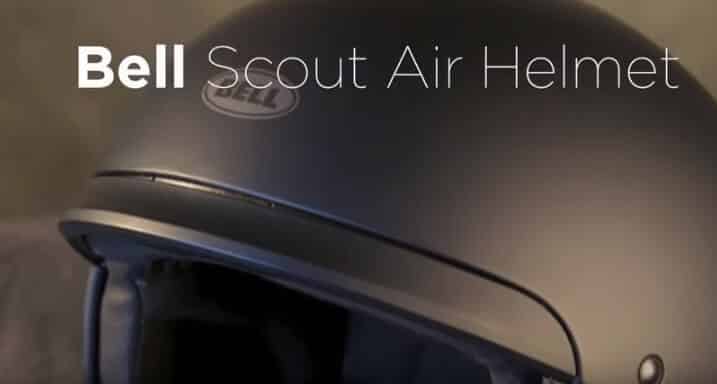
Our heads come in all shapes and sizes and so do helmets. Making your helmet fit better is easy once you know-how.
How To Make a Motorcycle Helmet Fit Better? There are a few ways to make your motorcycle helmet fit a little better, it may not just be the circumference of your head but the shape. Did you know that we all have different shaped heads? There are round oval heads, an intermediate oval head, and you’ve got a long oval head. Our video tutorial explains exactly how to get your helmet to fit a bit better.
Now that you’ve narrowed down the style of the helmet you’re looking for the most important consideration you need to figure out is what internal head shape you need.
While all these helmets might look identical from the outside they each represent a different internal fit. You’ve got a round oval head, you’ve got an intermediate oval head, and you’ve got long oval heads.
A round oval helmet is going to be slightly shorter front to back with a bit of additional room at this side of the head. The intermediate oval helmet is a little bit longer front to back, slightly narrower at the side of the head and then a long oval helmet is going to be long front to back and narrow at the temple.
Purchase only the helmets that match up with what your head shape. If you find yourself in between two different head shapes just keep in mind the most popular shape for the American market is intermediate oval.
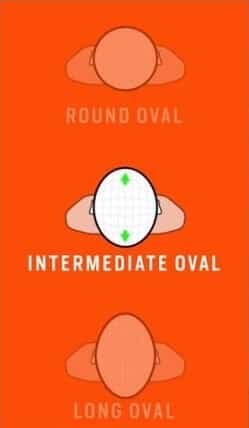
Every helmet that we’re going to discuss will carry a Department of Transportation or DOT sticker associated with it, which means that it’s legal for street use in the United States. You might see some other safety ratings out there like Snell or ECE, we’re not going to cover those in this article.
Regardless of what helmet price point you’re shopping at, or what safety rating you’re looking for all the sizing information in this article will apply to all helmets.
Once you’ve determined the style you’re looking for and the shape that you need, all that’s left is to figure out what size you want to go with and to do that you need a soft tape measure and a trusted friend.
Choosing the correct size helmet is the final step in the selection process.
What you need to do is have your trusted friends stand behind your head and take that soft tape measure and measure around the crown of your head.
The reason that we would recommend having a friend take this measurement is that typically it leads to a more accurate result.
Once you have that measurement you should match it up with the manufacturer size chart on their website product page you purchase from. I say this because different manufacturers have different size charts so you want to make sure you’re using the chart that’s associated with the helmet you’re looking at.
Even after this is all said and done some helmets still tend to run a little bit larger and a little bit small, make sure to check out any specific notes on the helmet that you’re considering.
At this point, you should have a helmet that matches up with your style, your head shape as well as your size. Once it shows up we recommend wearing the helmet around the house for a little bit before you go out and actually ride.
Watch some TV, do the dishes, just don’t ride in the helmet until you’re 100% sure that it fits you correctly.
A correctly fitting helmet will be nice and snug around the crown of your head without any uncomfortable pressure points, if you opted for a full face design the cheek pads should squeeze your cheeks nice and firm.
It should give you what most people would call chipmunk cheeks, you shouldn’t be able to comfortably chew gum. If after about an hour of sitting around in your helmet you feel like it fits you comfortably, congratulations you have got your new lid.
You can check you have the right style, shape and size motorcycle helmet while taking your safety and price considerations in mind. Hopefully, by this point in this article, you’ve had enough information to help you find the correctly sized motorcycle helmet.
If you want the best price for your chosen helmet you can always go to your local motorcycle store, check out the correct shape of helmet you need then purchase online.
Check Out Our Video Tutorial
Which Helmet Is Right For You?
When you know the shape of your head you now need to find out which helmet will fit your head shape. There are five different types of helmets available to purchase at the moment, we’re going to kick things off by taking a look at the open face helmet.
Open Face Helmet
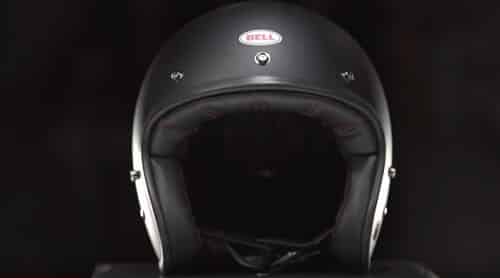
The open face helmet is available in two different styles, there is the three-quarter design and the three-quarter design actually adds additional protection down around the side of your head. Open face helmets are also available in a half helmet design, which only protects the very top of your head.
The benefits of an open face helmet is a mass amount of ventilation, they’re going to be easy to get on and off, and they’re not going to feel restrictive when you’re wearing them.
Pros
- More ventilation
- Easy To Get On and Off
- Less Restrictive
The main drawback of an open face helmet is that there is no protection for your face or your eyes. I mean no protection in the event of a crash but there’s also no protection from the elements, so if it begins to rain or it gets cold you’re going to get all of that right in your face
Cons
- No Face Protection
- No Eyes Protection
For a bit of additional protection let’s take a look at a full-face helmet.
Full-face Helmet
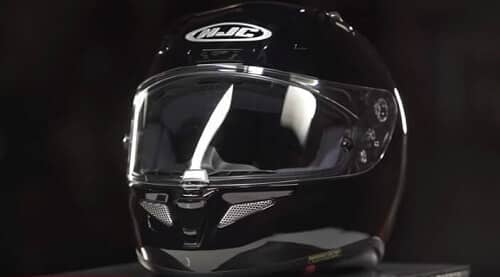
The full-face helmet is the most typical you’ll see on the street and it’s the only helmet you’ll see on the racetrack. You can get full face motorcycle helmets for women as well as men.
The main benefit here is you do not have the added protection of a chin bar, that works its way across the front of the helmet as well as a built-in face shield to protect your eyes.
Another additional benefit to all of this protection is that it’s quieter than an open face helmet when you’re riding down the road.
Pros
- Pros
- Built-In-Face Shield
- Quieter
Some of the drawbacks are it’s a little bit harder to get on and off, and If it’s not fitted correctly it can be uncomfortable and that’s why getting a correctly fitting helmet is so important.
Cons
- Difficult To Get On & Off
- Uncomfortable If Not Fitted Correctly
This is a traditional full-face helmet but there are a couple of different varieties on the full face so let’s take a look at those right.
Starting with the modular helmet
Modular Helmet
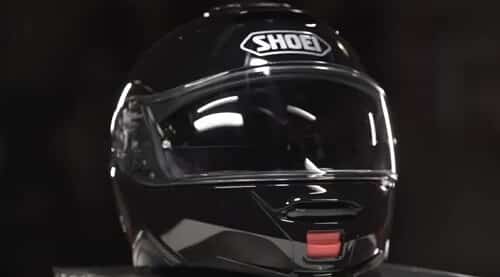
The modular helmets have become extremely popular with both touring and commuting riders because the main benefit of a modular helmet is that you can actually open it at the chin bar.
This allows you to get the helmet both on and off a little bit easier and when you’re sitting around in the gas station you can eat food, take a drink or simply have a conversation without taking the helmet off.
Pros
- Chin Barr Opens
- Easy To Get On & Off
- Less Restrictive
Some of the drawbacks of a modular helmet are they tend to be a little bit heavier and noisier than a traditional full-face and the chin bar can be a potential point of failure in the event of a crash.
The one note I want to make is that these are not designed to be worn in the open position while riding your motorcycle, so just keep that in mind.
The next variation I want to take a look at is the ADV helmet

The ADV or adventure helmets are designed for folks that like to ride both on and off-road. The benefits you’re going to see with this is that you have a helmet that’s going to be more comfortable and quiet than a true dirt bike helmet would be on the street.
You will still be able to use goggles with this, and these are going to be safety rated which means you can use them both on and off-road legally.
Pros
- Comfortable & Quiet
- Usable With Goggles
- Safe On & Off-Road
The drawbacks here are they’re going to be a bit heavier and not nearly as well ventilated as a true dirt bike helmet. They’re still going to have this peak on the top which can cause lift at fast highway speeds.
Cons
- Heavier
- Less Ventilation
- The peak can cause a lift
This is going to take us right into the final variation of a full-face helmet which is going to be a true dirt bike helmet.
Dirt Bike Helmet
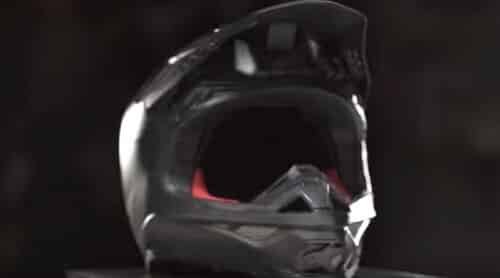
A dirt bike helmet is a very specific tool designed for off-road riding. The main benefit you’ll see here is that there’s a mass amount of ventilation, they’re typically lightweight and they’re very easy to clean and maintain.
Pros
- Lightweight
- Easy To Clean
Some of the drawbacks, however, is they might not be DOT rated so they might not be street-legal. You’re also going to notice there’s no protection from the elements, they can be a bit noisy and the peak can cause lift at extreme speeds.
Cons
- Not Always DOT Rated
- Peak May Cause Lift
We all know after a while our helmets start to smell a bit, you know the pungent smell that comes from years of wearing our helmets in hot weather.
You meant to clean it but you just never got around to it, well now you can with this simple three-step video tutorial on how to clean your smelly motorcycle helmet.
It’s really easy to do and you don’t even need any harsh chemicals to do it, most of the materials you need to can find in your home already..


